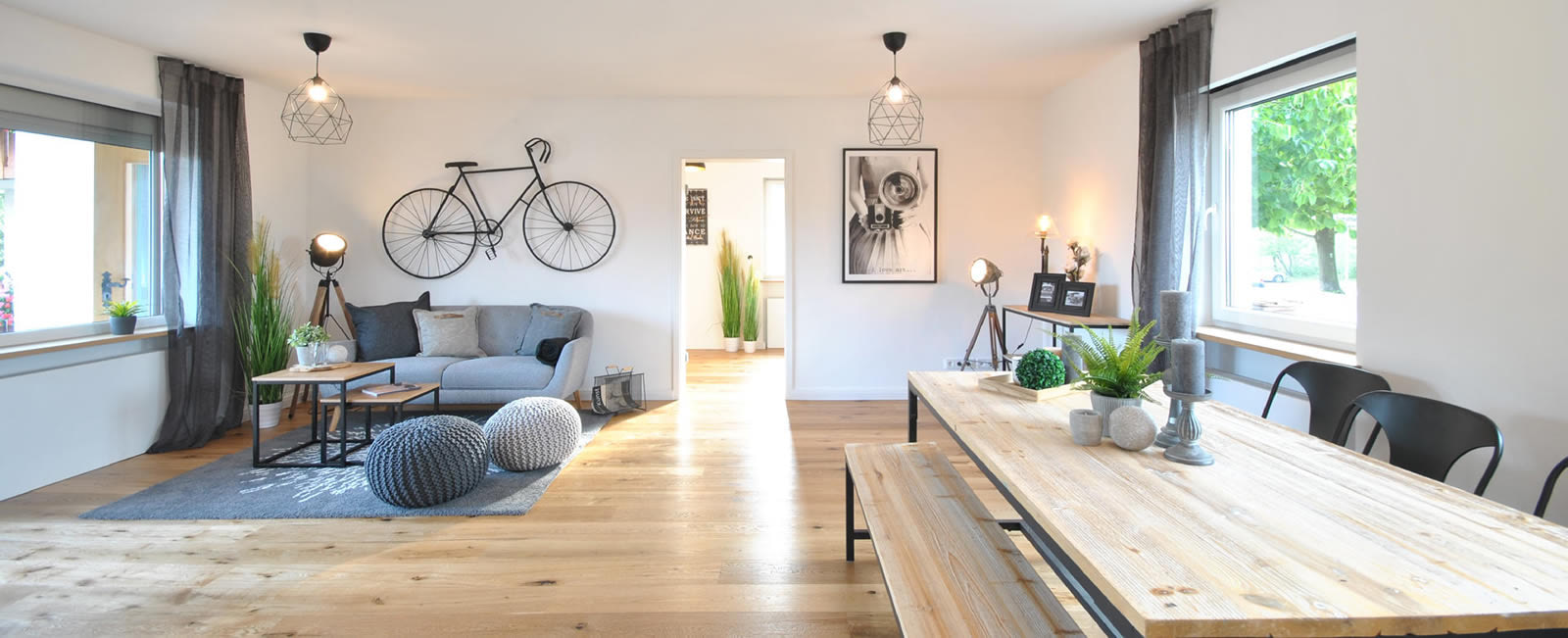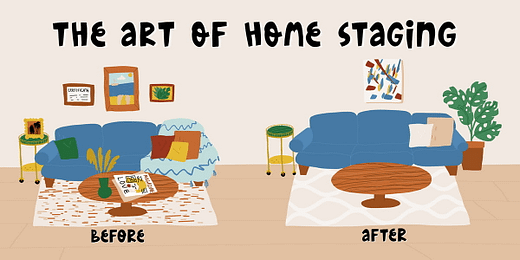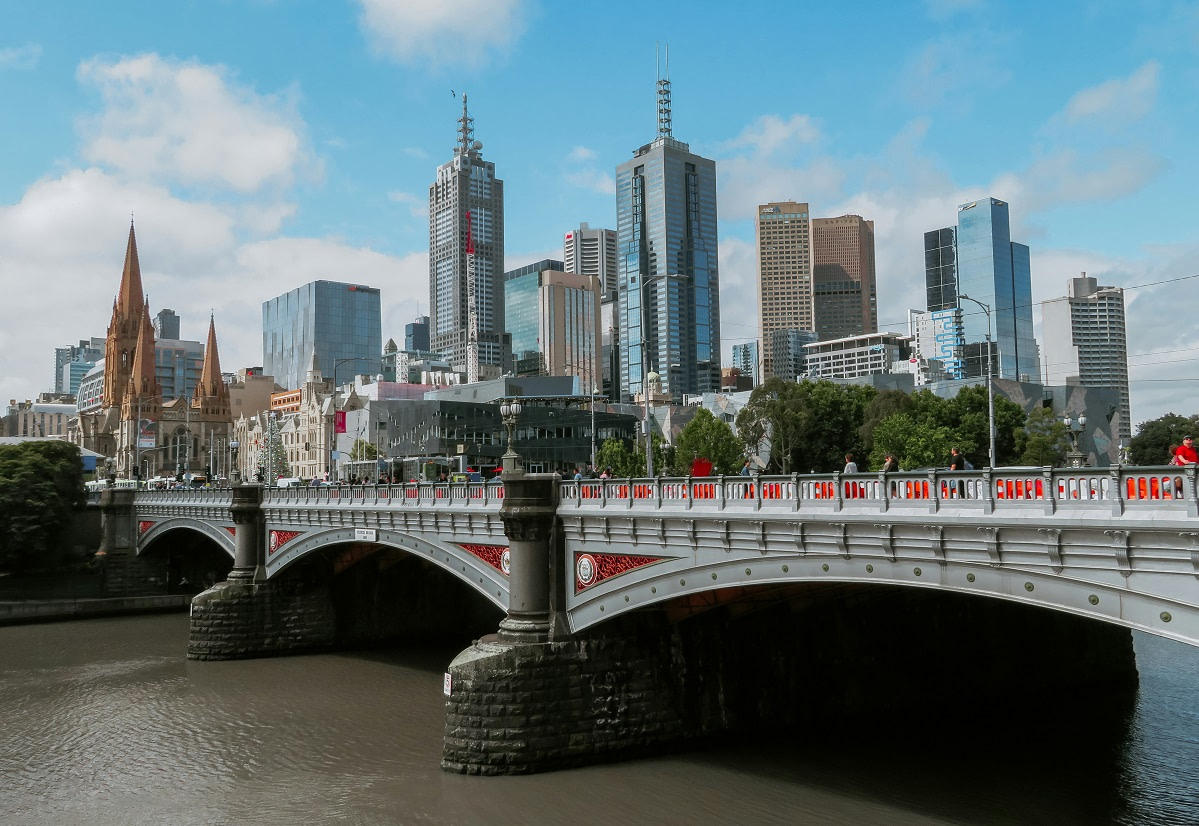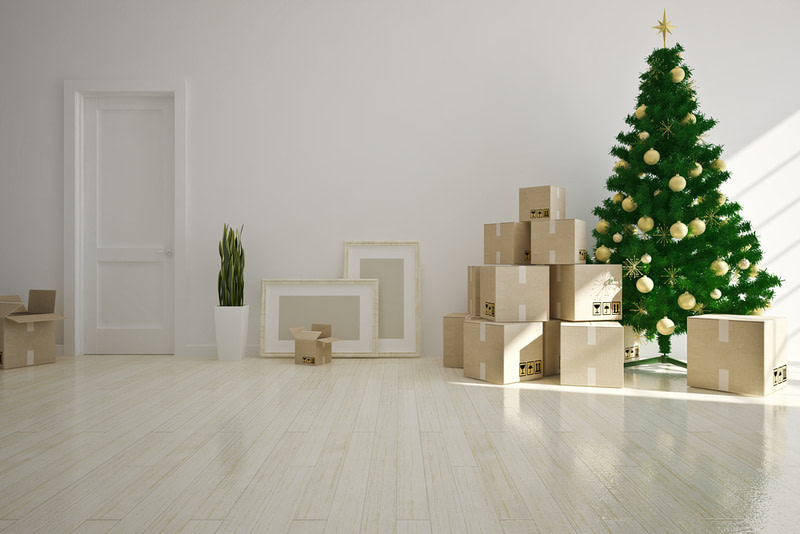Last Updated on June 1, 2023 by Vlad Stoikovich
Ready to move on to the next chapter in your journey? If you’re a homeowner looking to relocate, this likely means putting your current house on the market.
You’ve curated your home to suit you, your style, and your needs. But when it’s time to sell your house, you want to appeal to as many potential buyers as possible. It’s important to remember that the way you’ve decorated your home in your preferred decor, may not appeal to everyone.
When house hunters come to your open home or view your listing online, you want them to imagine themselves living there. You’re selling more than just a house — you’re selling a vision of exactly what kind of life they’ll live in the home.
For example, a tidy, orderly, functional space suggests that they’ll have that same experience once they move in and make it their home.
Worried your house won’t show at its versatile best? That’s where home staging comes into play.
What is home staging?
Home staging is when you set your house up to look like an ideal living space. Imagine a model home styled to look like a family is living in it, or glossy photos in an architecture publication.
Staging helps define each area in the house and makes it clear to potential buyers how each area can be used. The goal when staging your house is to create an appealing, inviting space so potential buyers can imagine themselves calling your house their home.
That being said, the goal of home staging is not to create a space that actually makes your day-to-day living easier or more convenient. In many cases, a staged house won’t actually function well for daily life.
You can think of a staged home as somewhat like a blank canvas, buyers should be able to superimpose their own perfect lifestyle or decor preferences on your canvas.
You might, for example, leave a stylish coffee maker on the kitchen counter next to a bowl of lemons because it’s visually appealing, but you wouldn’t leave your family photos on the mantlepiece or your niche taste in art on the walls.
The benefits of home staging
In Melbourne, current 2022 statistics from Domain show that the market is slowing, with supply exceeding demand, a situation that’s being seen in other state capitals including Sydney. Home staging can be invaluable in the current climate, helping you sell your home quickly at the best price possible.
An LJ Hooker survey showed that 86% of potential buyers use online platforms as their “main tool to search for properties.” Standing out from the hundreds of other listings online means your home can quickly generate interest, which turns into traction (more on why that’s important below).
Home staging has many other benefits. For one, it gives potential buyers a clear picture of how they would use the space. It’s especially helpful if you’re working with a vintage home that boasts quirks or unusual elements; even awkward spaces can feel like a purposeful selling point when styled well.
It can also help hide any undesirable features, or at least ensure that these are presented in the best possible light.

Traction matters
Traction matters because the more interest you can stir up in your home, the more people will come through to look at it — making it more likely that you’ll end up with a favourable offer.
It’s not just about getting a great offer, though. Getting an offer is important, of course, but it’s equally important to remember that your house is costing you money while it sits on the market.
If your house isn’t showing its best sides and isn’t attracting the interest of shoppers, not only are you not selling, but you’re also continuing to make mortgage payments.
Another thing to consider is that buyers prefer homes that are newly listed. If a house has been sitting on the market for a while, or if there are significant drops in the asking price, house hunters begin to wonder why. Would-be buyers may believe that something is wrong with the house if it hasn’t sold. In hot housing markets, this is even more of an issue, as lingering houses are less common.
An additional perk of attracting all that different attention, especially during a hot housing market? Multiple parties interested in purchasing your property can quickly lead to multiple offers and a final purchase price that’s even higher than the listing price.
I only have a small or affordable home, is home staging right for me?
Yes! There’s a common misconception that staging is just for large, palatial homes or homes that are likely to sell for millions.
Many people worry that their house won’t benefit from staging if it’s smaller or won’t be selling at a higher price, but nothing could be further from the truth.
Owners selling at lower price points who take the time to stage their homes or invest in professional home staging services gain the same benefits, such as sales prices of 7.5% to 12.5% higher than unstaged homes, according to LJ Hooker’s top agents.
It only makes sense, as any property, regardless of its size or anticipated selling price, will sell quickly and for as much money as possible if it’s presented at its best.
Should it stay or should it go? A few staging principles
Because your canvas needs to be aesthetically pleasing enough to lure in buyers yet blank enough to appeal to a broad audience, sellers often choose to remove the majority of their belongings, creating a sparse and streamlined house-scape.
Others may pare down their belongings and just leave a number of things in place. That’s not always possible, though, especially if you’ve already moved out of the house and into a new location. In those instances, you may choose to work with a professional home stager or rent the necessary items to properly stage your home.
Scale and how it impacts staging
Generally, staging a house also involves scaling back on furniture — both in quantity and size — so your space feels feeling larger. Less furniture in a house makes the space look larger, however, too little or no furniture at all can give the opposite impression. This is because we generally don’t have a good feel for how furniture will look in a house without some indicators to scale.
When staging, a few well-proportioned items can give your potential buyers a better understanding of the size of the house and how the space can be used. You’ll also find houses photograph better when staged, which is ideal in a tech-forward world where house shopping begins with online searches.
All white or neutral?
The best staging jobs include furniture, wall colors, and styles that are both popular and neutral. It may be tempting to go with white on the walls and avoid too much accent color, but this can leave a home feeling flat and uninviting.
Instead, consider using warm, appealing neutrals in light tones that don’t overpower or close in the space.
It may feel like you’re bottling some of your individuality and restricting your sense of style when you’re staging your home. But remember that tempering your individual style makes the space more appealing to a larger audience.
All in or just some areas?
Staging isn’t an all-or-nothing venture. If you do want to hire someone to help you stage your property, but can’t afford to have every room in the house addressed, just focus on key areas.
Think about which rooms are most used and highlight those spaces. Family rooms, master bedrooms, and outdoor gathering spaces can be huge selling points. Make sure they’re showcased in their best light.
How to get started staging your home
You may want to consult a professional and get a quote for the cost of staging your home. This can help you identify if you want to attempt the staging yourself or if you’d like to outsource the task.
When hiring a professional, always get quotes from more than one source, and have different levels of the service assessed. For instance, a quote for staging the entire house, just a few rooms in the house, using your own items, or renting furnishings to stage the space.
If you’re still on the fence about house staging, it may be helpful to know that Hipages has been cited as saying that the average time an unstaged home sits on the market is 90 days while a staged home averages just 33 days on the market.
Have the best selling experience possible
Your best bet for success with selling a house is to sell it quickly after listing. To achieve that, you want your home in tip-top shape when you put it on the market.
Give yourself plenty of time to get things in order. It will make the process less stressful for you and smoother overall. In general, it’s recommended that you give yourself two months’ time to prepare your house for listing.
A little bit of prep work such as packing in advance and arranging storage facilities, freshening up the space, fixing minor issues, and a fresh coat of paint can save you months of mortgage payments and can even lead to a higher purchase price.
Many people can’t move forward with a new home purchase until their old home is sold or under contract. Considering all of these pieces together, it’s obvious why many people choose to stage their homes, even if doing so means extra items on the moving and selling checklist.
HomeMove makes your life that little bit easier
Too many things to do on your to-do list? We’ve got your back. HomeMove offers a range of services that go beyond moving your belongings.
Our professional packers can come in and help you get the clean, tidy rooms that prompt higher sales prices, and we have dedicated storage facilities where your belongings are kept safe until you’re in your new home.
Take some of the stress out of both staging and selling and contact the HomeMove team today.
Home Staging FAQs
Make sure the home is decluttered and depersonalized – this includes kids’ toys and artwork. Consider neutral décor for kids’ rooms to appeal to the broadest range of buyers.
While you can stage your home yourself with some research and effort, hiring a professional home stager could be beneficial, especially if you’re unsure how to present your space or if the property is high-end. They have experience and a keen eye for what buyers are looking for.
Creating a warm and inviting atmosphere can be achieved through the use of lighting, ensuring the home smells fresh, adding cozy touches like throw blankets and cushions, and ensuring the temperature is comfortable.
The cost of home staging varies based on the size of your home, the number of rooms being staged, your location, and the staging company you choose. It can range from a few hundred to several thousand dollars.
Use furniture that fits the scale of the room, avoid overcrowding, and use mirrors to make the space feel larger. Make sure there is plenty of light, and use light-coloured paint and décor to give an airy feel.
While it’s ideal to stage all rooms, if that’s not possible, focus on the most important ones: the living room, kitchen, and master bedroom. These rooms are the most influential in a buyer’s decision-making process.
Declutter your space, depersonalize it (remove personal photos and items), and ensure the home is spotlessly clean. Also, consider neutral paint colours, ensuring good lighting, rearranging or removing furniture to enhance the flow and sense of space, and adding appealing accents like fresh flowers or tasteful décor.
Home staging is the process of preparing a private residence for sale in the real estate marketplace. The goal of staging is to make a home appealing to the highest number of potential buyers, thereby selling a property more swiftly and for more money.
Curb appeal is crucial, so ensure the front yard is neat and inviting. For the backyard, consider setting up outdoor furniture to suggest an entertaining space. Make sure all landscaping is well maintained.
Home staging helps potential buyers visualize themselves in the space, making the home more appealing. It can also highlight the home’s best features, create a sense of space, and potentially increase the home’s perceived value.

Vlad Stoikovich is the General Manager of HomeMove, with more than twenty years in the Melbourne removalist industry, you won’t find anyone with more experience or greater integrity.






